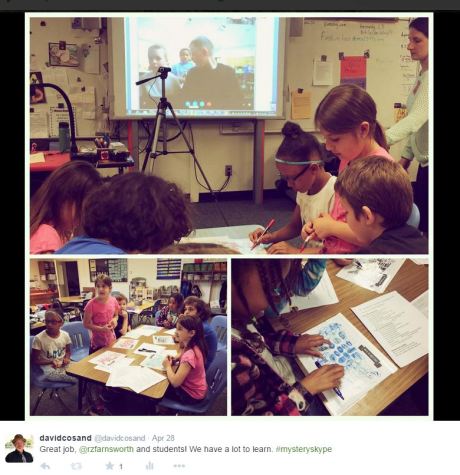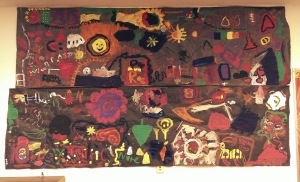Here is a link to a video with some interesting practice ideas for learning your weekly spelling list:
The last days of our school year are busy. Crazy busy. I wanted to build in opportunities for creativity and non-traditional thinking while still addressing standards, so I introduced the Recycled Invention Project. The challenge was for students to look around their homes for items that might otherwise be thrown out or recycled, and dream up creative ways that those items could be used. The goal was to create something useful…something that accomplished a goal of some sort. Students were told that their projects could look nice, but it’s not an art project. It was great seeing the broad range of responses when students were first told about the project. Some were instantly excited and inspired. Others were confused or frustrated with uncertainty. Over the course of a couple of weeks, the projects began to take shape at the students’ homes. This week, the students are presenting their projects. From the photos below, you can see that we’ve had a very wide range of creative inventiveness. Solar-powered s’mores makers, musical instruments, items for carrying things, new methods of watering plants, and many other marvels of design and engineering have been introduced in our classroom. This project – and the students’ enthusiasm – reminds me how important making things is in the process of learning. Collections of information and facts are important, but applying our learning and discovering things along the way is powerful. This has been my first year as a 3rd grade teacher. I wasn’t sure what my students were capable of, but they’ve impressed me again and again and again. I have no doubt that their inventiveness and knack for seeing things in an unconventional manner will serve them very well in their lives. 

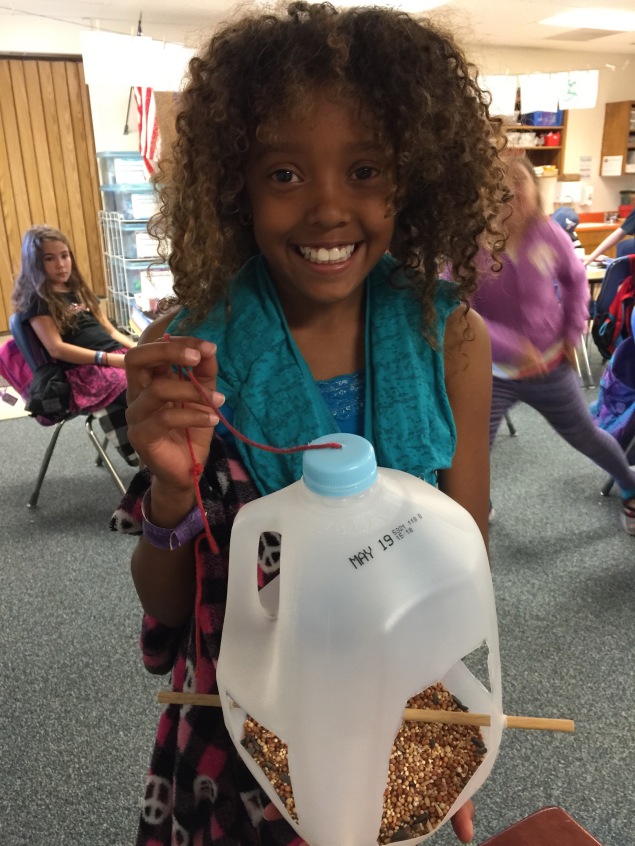




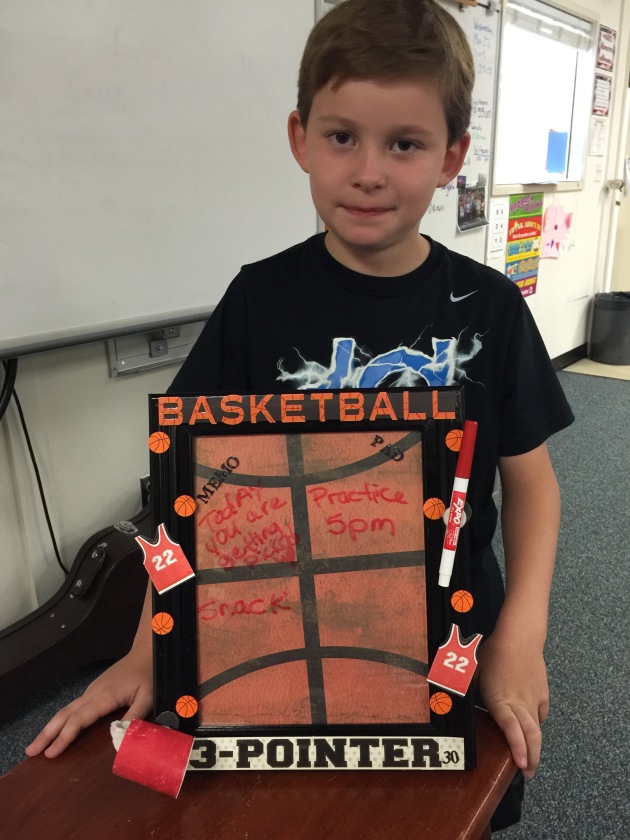


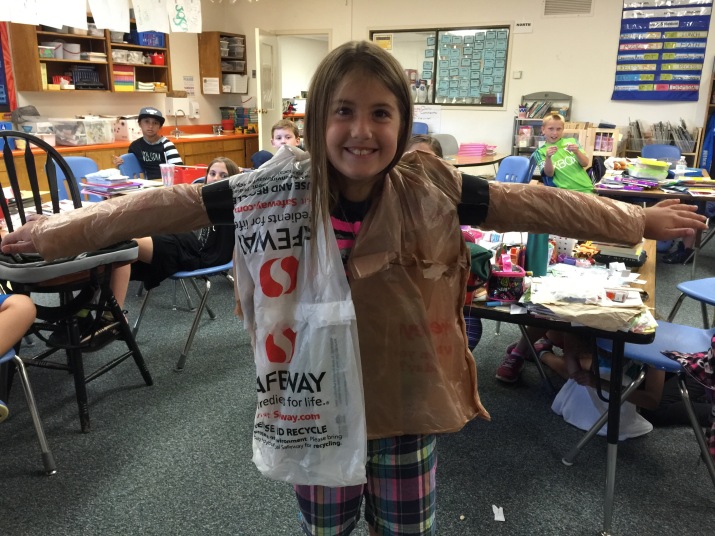
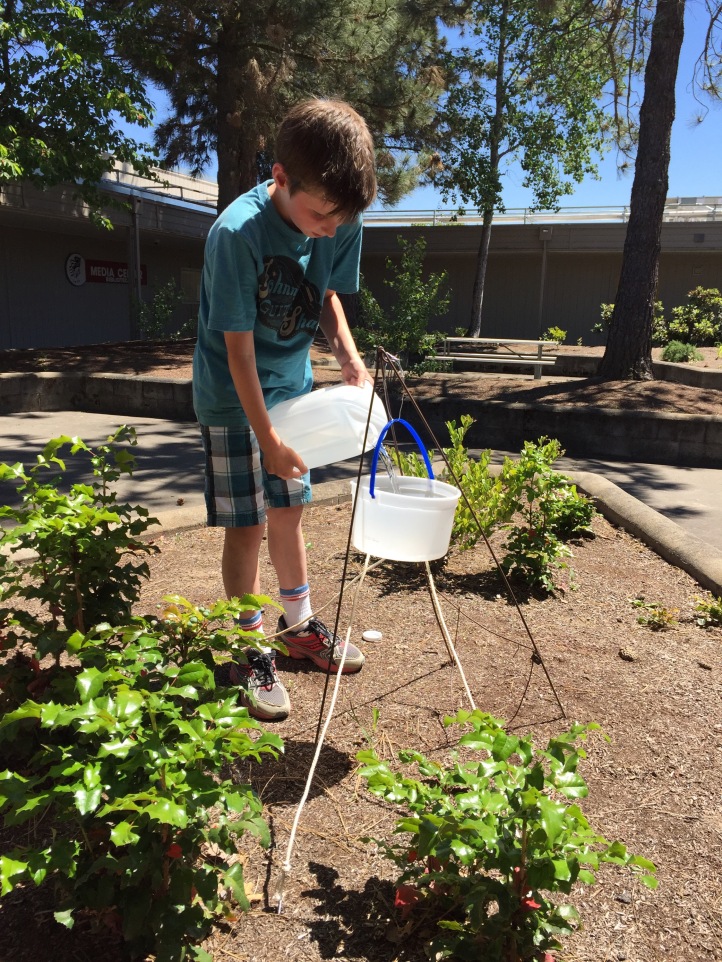


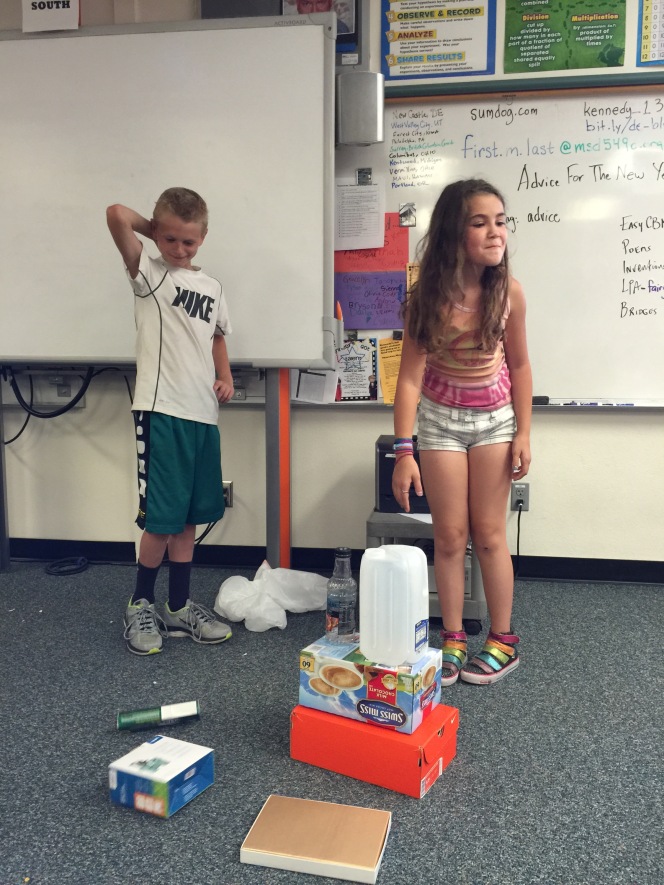 Examples.
Examples.
This month, our class of third graders started to Mystery Skype with other classes from unknown parts of the world. I’ve written about Mystery Skyping before, but it is very exciting to introduce a new group of students to this exciting game.
Like so much that we’ve done this school year, I entered into the experience unsure of what my 3rd graders could do. In the past, my Skype adventures have been with a class of 5th graders and those two years of age and development can make a big difference. For the most part, these 8 and 9 year olds have done very well. They are total troopers and work really well together.
Not every game has gone well. Utah, for example, kinda creamed us. There is a lot to be learned in both winning and losing, though. Tomorrow, we get another chance to explore the world. We will be connecting with a group of educators during a conference they are attending. We get to be young ambassadors, teaching adults how Mystery Skype works. It’s a pretty exciting opportunity. The students will become the educators.
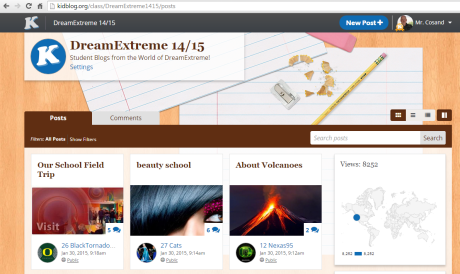 I love how small the world can become when we connect with others through technology. Through the years, blogging has been one of the most immediate ways my students have been able to communicate with other learners from around the world. It’s incredibly gratifying when a young person in my classroom writes a post and gets comments from people he or she has never met.
I love how small the world can become when we connect with others through technology. Through the years, blogging has been one of the most immediate ways my students have been able to communicate with other learners from around the world. It’s incredibly gratifying when a young person in my classroom writes a post and gets comments from people he or she has never met.
This past week, one of my kids wrote a blog post about two books that she has been reading. I loved the enthusiasm and insights that she shared, and I thought it deserved a wider audience. I shared a link to her post via Twitter, using the #comments4kids hashtag.
 Almost immediately, we began to see comments from teachers and students across the country. The excitement that response generated for my young writer and her classmates was amazing. It reinvigorated the entire process of blogging for our class. They realize that not all of their posts will get such a response, but it inspired them to strive for it.
Almost immediately, we began to see comments from teachers and students across the country. The excitement that response generated for my young writer and her classmates was amazing. It reinvigorated the entire process of blogging for our class. They realize that not all of their posts will get such a response, but it inspired them to strive for it.
Blogging, for me, is valuable because it is authentic. It is a direct path of communication with the world at large. Knowing that a simple piece of writing from a little school in Southern Oregon can be seen and enjoyed and responded to by people on the other side of the continent makes it seem more important and worthwhile. Any time my students see the things we do at school as being important and worthwhile is a time when success is being realized.
 As 2014 drew to a close, an interesting thing began to happen in the DreamExtreme classroom: my 3rd grade students began to think and talk like computer programmers.
As 2014 drew to a close, an interesting thing began to happen in the DreamExtreme classroom: my 3rd grade students began to think and talk like computer programmers.
As part of the Hour of Code program, I set my class up at Code.org and directed the students to begin working through the training modules. The scaffolding in the program is wonderful, and every kid in my class was able to navigate the process and enjoy it at the same time. In fact, they couldn’t wait to get back to learning how to code anytime they finished some other task or assignment. Another site that we’ll be checking out soon is Run Marco.
It is incredibly exciting to find ways for my students to explore, be creating, express themselves and build meaningful skills. Now, I’m not naive enough to think that these young people are ready to run out and create the next killer app or blockbuster website…but I fully believe that they are making small steps forward and building a foundation for such things. I’m looking forward to seeing where these small steps may lead.
When I was 6 years old, my family went on the first major road trip that I can remember. I vividly recall stacking suitcases into the trunk, grabbing bags full of snacks, and piling into our red 1976 Ford Granada for a trek south to Disneyland. The trip felt spontaneous and exciting to my 6-year-old mind, but I realize now that my parents put a lot of planning into the excursion. My mom and dad had spent weeks figuring out where we would go, what we would do, and how we’d manage to pay for everything.
Setting goals is a vital part of moving forward in life.
Today, I’m working off-campus with a remarkable group of educators from around southern Oregon. We’re talking about utilizing technology in the classroom and the underlying framework that can make it successful. We were asked to set some technology-related goals for the remainder of this school year.
Here are some of the things I’m thinking about…
I want to continue to learn what my students are capable of doing with technology. This is my first year as a 3rd grade teacher and it has been a bit of an adjustment. Third graders need more support and assurance than 5th graders typically do, so there is more front-loading required whenever we start something new. (There are also way more hugs along the way, though, so it works out just fine.) The first day we pulled out the Chromebooks and tried to log-in nearly killed me. The slooooow progress made me fear that we might never be able to move beyond the start-up screen to actually be able to create anything. Nine weeks later, I am amazed and delighted by the confidence that my students are showing in how they have embraced technology and the way they support each other along the way.
I want to find a good balance in technology utilization with my 3rd graders. I have always had a tendency to adopt things quickly because they seem innovative or interesting. It can be really good to embrace new and compelling opportunities, but it can also muddy the water for my students if the tools and resources are not integrated in an enduring, meaningful way. I need to filter through the things I’ve used with students at other grade levels and sift through the constantly-growing tide of new tools to find things that will connect with my kids, give them room to grow and create, and move them in the direction of accomplished understanding.
I want to open my students’ eyes to possibilities and help them run with their natural curiosity and creativity. At 3rd grade, there is SO much imagination and willingness to try new things. Technology is a perfect arena to give students tools to express themselves and create something in the process. An area where this is especially true is learning how to write code. Code-writing is at the core of all technology…all apps and games and websites…they’re all made with code. People who know how to write code have an amazing canvas upon which to create, publish, and share their imagination. (They also have an amazing degree of options when it comes to finding a job!) This year, I want to involve my students in learning how to code. It seems daunting at the moment, but there are some great tools available to help make the journey successful.
Learning is a never-ending process. There is always something new to discover and something worthwhile to take away. As I set goals for where I take my students this year, I am helping them to make learning and creativity a priority. I’m also helping myself to keep my focus on the great satisfaction to be found in being a lead learner. I want school to feel like an exciting journey for my kids, and I want them to see that all great adventures require planning.
One of my students showed this video to me this morning and it made me laugh. I love the Kid Snippets approach to making videos…taking kids’ conversations and having adults lip sync the action. It’s a great combination of creativity and cuteness.
What is your favorite Kid Snippets video?
This weekend, one of my teacher friends shared a video on Facebook that I think excellently shows the current approach to teaching multiplication in elementary school. In the past few years, as a 4th, 5th, and 6th grade teacher, I’ve truly enjoyed seeing students have “aha” moments when they make the connection between the standard algorithms that their parents (and most adults) know and use and the “unpacked” approach we use in our math curriculum. Going through the steps of an algorithm can be efficient, but those steps hide most of the math that is really happening. This doesn’t do much for helping people feel confident and capable in their math skills.
Take a look at the video and let me know what you think.
Three weeks into the new school year, our students earned enough classroom resort points to score a party. After some pretty intense brainstorming, they voted on Camping in the Classroom as the activity they wanted. Students brought in sheets and blankets to create take tents. Some students made “campfires” out of paper, while others brought flashlights. We rounded the event our with s’mores and campfire sound effects.
I love how creative and collaborative these students are. It is fun to spend a day working hard with them. 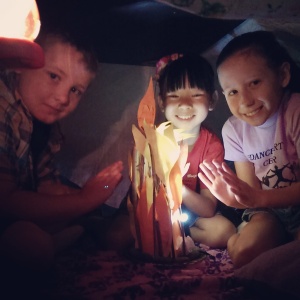
One of the vital parts of a healthy learning environment is the ability to collaborate…to work together. The first week of school, we created two large group murals. The paintings started out as stylized drawings of each student’s first and last initials. The designs then progressed from there, bringing in color and shape with an eye toward integrating with the work of students on either side.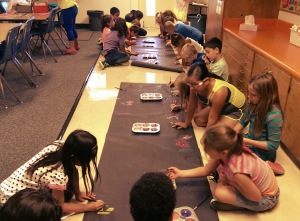
After allowing the paintings to dry overnight, we hung them on the wall as a bold, colorful accent for our classroom. I love to have student work readily visible when guests visit our room. These murals are definitely going to be hard to miss!
